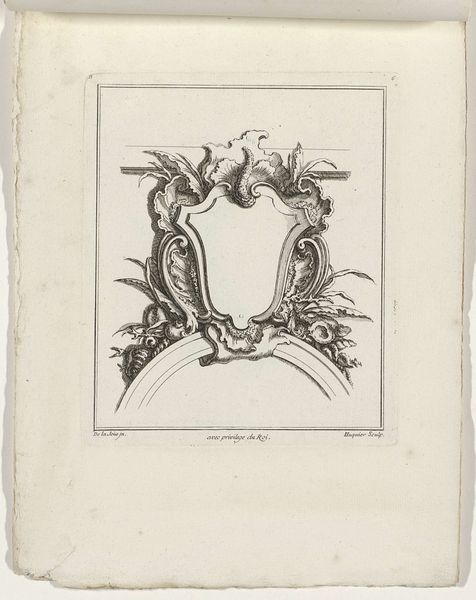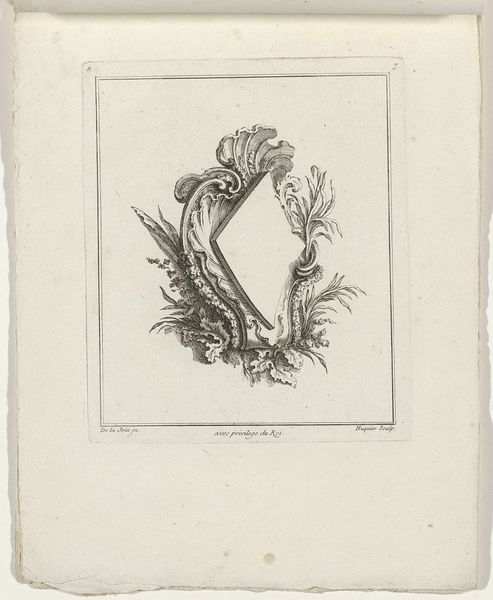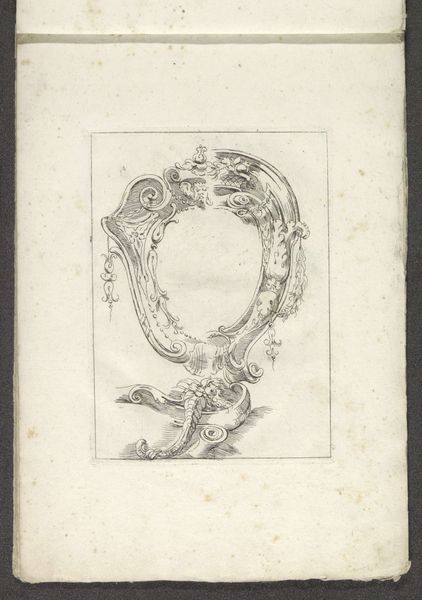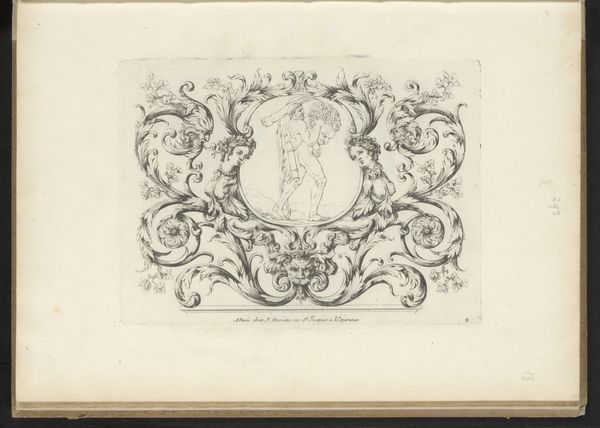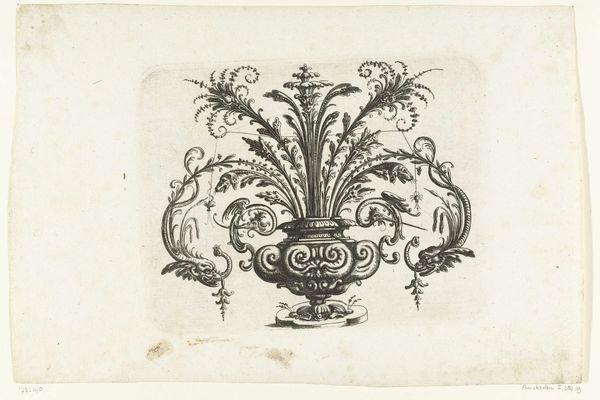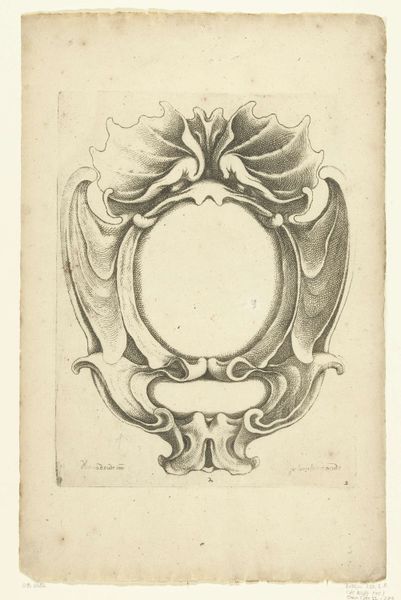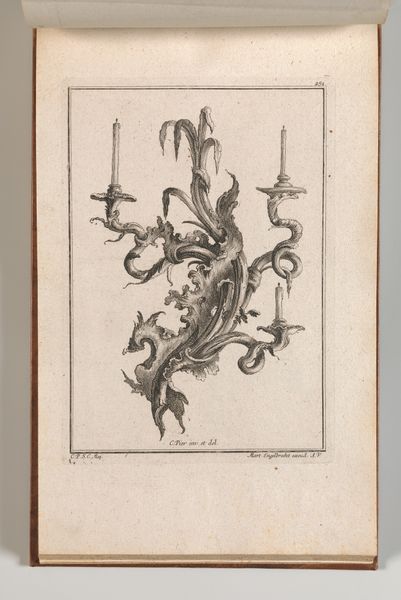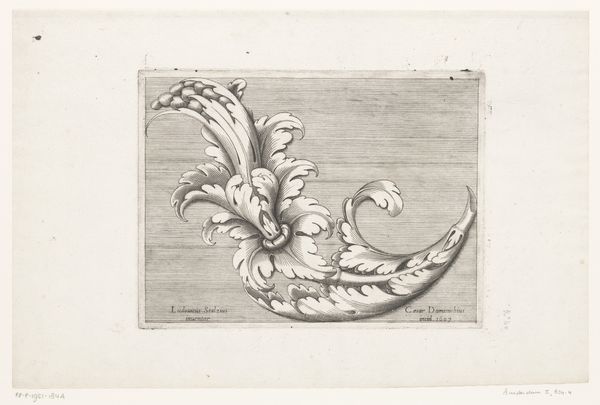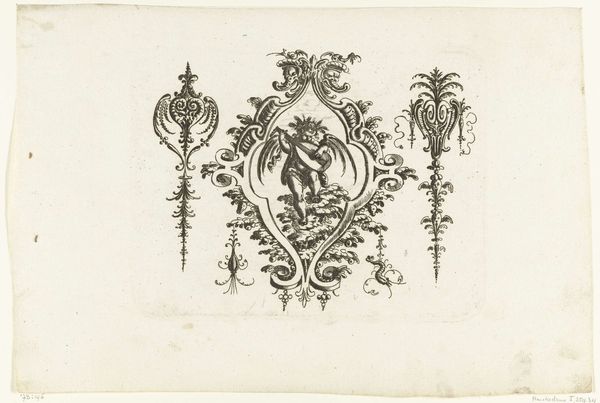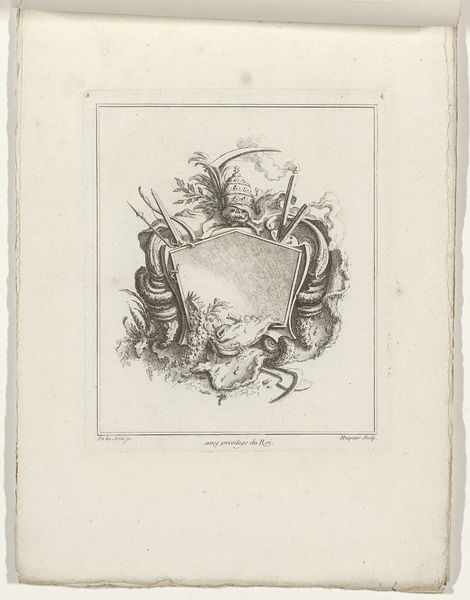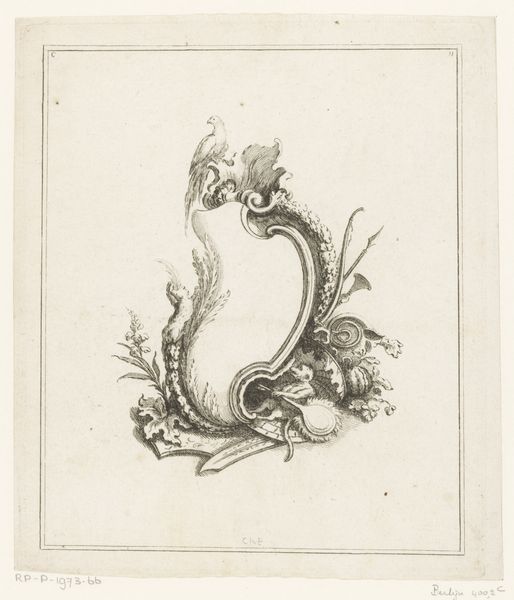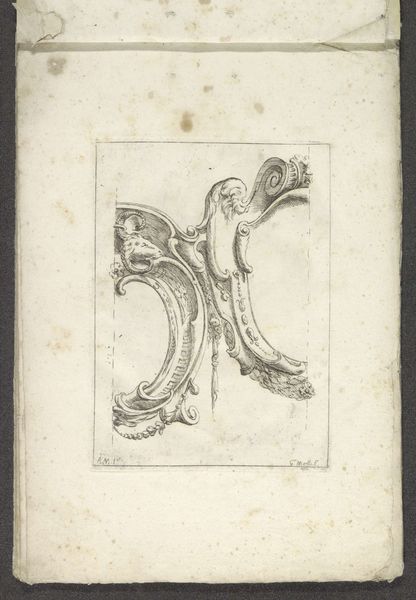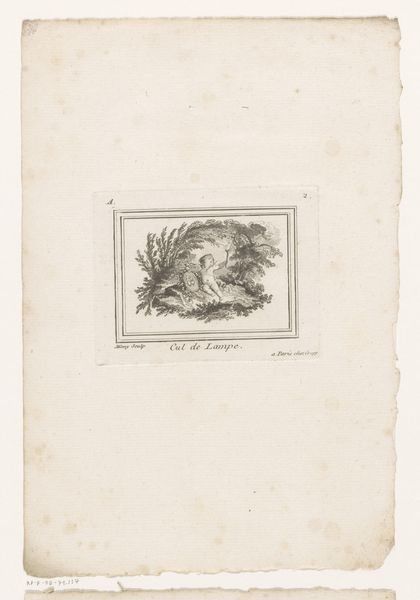
print, engraving
#
baroque
# print
#
line
#
decorative-art
#
engraving
Dimensions: height 230 mm, width 198 mm, height 350 mm, width 268 mm
Copyright: Rijks Museum: Open Domain
Curator: Gabriel Huquier, working sometime between 1710 and 1772, created this engraving, titled "Cartouche Crowned with a Trident." It resides here at the Rijksmuseum. Editor: My first impression? Fanciful! It's like peering into the depths of someone's Baroque daydream. All these swirling lines and… is that an octopus arm? Curator: Indeed. This decorative print, done in a linear Baroque style, showcases a cartouche embellished with marine motifs, which does include a trident and what appears to be marine life. I always consider this as an exercise in power display. In that era, these cartouches were emblems of authority. Editor: Right, like framing royal decrees? It feels playful but controlled—that tension intrigues me. It reminds me a little bit of those sea-themed episodes of Spongebob. A squid as interior decorator; it's just so cheeky! Curator: Your read is insightful, although perhaps unexpected. This print exemplifies a Baroque aesthetic, rooted in a desire to display grandiosity through highly decorative embellishments. Considering the historical backdrop, one can draw interesting parallels between artistic expression, political agendas, and social hierarchies. The cartouche—or frame—itself can be seen as more than mere ornamentation, it signals who is being included and, subsequently, who is being excluded from that frame. Editor: Totally. It's beautiful but also slightly suffocating. Imagine every announcement, every important proclamation boxed in by all this elaborate decoration. There's so much happening, it might be easy to forget whatever you were announcing to begin with. Curator: And in that dynamic lies the central tension. By visually positioning messages within the boundaries of royal symbolism, such prints were effectively normalizing existing power structures by integrating them within cultural artefacts and everyday imagery. This artwork's capacity to visually project status and power is a legacy that speaks across generations. Editor: Well, next time I need to frame something important, I’m hitting the seashore! What I’ll do with an octopus tentacle and a trident I don’t know. I love art that brings a wink and a nod to history—I feel I might be dreaming with Neptune now. Curator: In its visual representation and its historical context, "Cartouche Crowned with a Trident," asks us to consider the dynamics of power and artistic expression and how these elements intertwine and define each other in our social fabric.
Comments
No comments
Be the first to comment and join the conversation on the ultimate creative platform.
